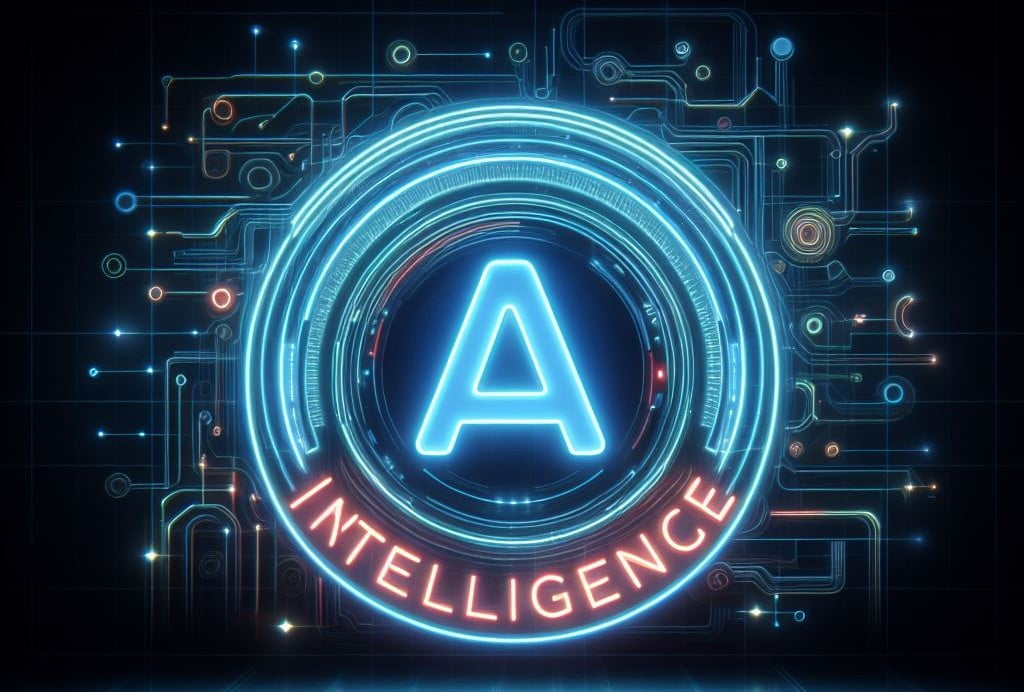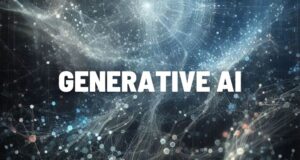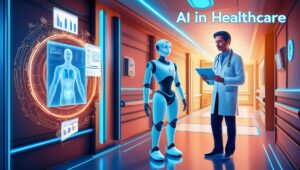Artificial intelligence (AI) has gone from science fiction fantasy to a ubiquitous reality, quietly transforming our lives in countless ways, whispered in boardrooms, splashed across headlines. But what exactly is AI? Is it the stuff of robots taking over the world, or is it something more? Buckle up, because we’re diving deep into the fascinating world of AI, exploring its essence, its applications, and its potential impact on our lives.
What is Artificial Intelligence?
In simple terms, Artificial Intelligence, often abbreviated as AI, refers to the ability of machines to mimic human cognitive functions like learning, problem-solving, and decision-making. It’s not about creating sentient robots (yet!), but rather about developing machines that can process information, identify patterns, and adapt to new situations.
Think of it like this: Imagine you train a dog to fetch a ball. You show it the ball, throw it, and reward it when it brings it back. Over time, the dog learns to associate the ball with the reward, and eventually, it can fetch it even without explicit instructions. AI works similarly, but on a much more complex level.
Types of Artificial Intelligence
- Narrow AI: Also known as Weak AI, Narrow AI is designed to perform a narrow task or a specific set of tasks. Examples include voice assistants, image recognition systems, and recommendation algorithms.
- General AI: General Artificial Intelligence, or Strong AI, refers to machines with the ability to understand, learn, and apply knowledge across a wide range of tasks, just like a human being. General AI remains a theoretical concept and is yet to be fully realized.
- Superintelligent AI: Superintelligent AI surpasses human intelligence in every aspect and possesses cognitive abilities far beyond what humans can comprehend. This level of AI remains speculative and is often the subject of science fiction.
How Does Artificial Intelligence Work?
Artificial Intelligence systems are built using algorithms and mathematical models that enable machines to learn from data, recognize patterns, and make decisions. The key components of AI include:
- Machine Learning: Machine learning algorithms enable machines to improve their performance on a task through experience (data) without being explicitly programmed. Supervised learning, unsupervised learning, and reinforcement learning are common types of machine learning.
- Neural Networks: Inspired by the structure of the human brain, neural networks are a set of interconnected nodes (neurons) arranged in layers. They are used for tasks such as image recognition, natural language processing, and speech recognition.
- Natural Language Processing (NLP): NLP focuses on enabling computers to understand, interpret, and generate human language. It is used in chatbots, virtual assistants, language translation, and sentiment analysis.
- Computer Vision: Computer vision involves the ability of machines to interpret and understand visual information from the real world. It is used in facial recognition, object detection, autonomous vehicles, and medical imaging.
Understanding Components of AI using a simple example
Imagine you’re teaching a dog a trick. You don’t tell the dog every single step, you show it and reward it when it gets it right. That’s kind of like Machine Learning in AI. Machines learn from data (like the dog learns from your actions) and get better at tasks without needing every detail programmed in.
Now, the dog’s brain is pretty complex, right? Neural Networks in AI are inspired by that complexity. They’re like webs of connections that learn by adjusting themselves based on data, making them really good at things like recognizing faces or understanding language.
Speaking of language, Natural Language Processing is all about teaching machines to chat with us humans. It helps computers understand what we say, write, and even how we feel, like in those chatbots you might talk to online.
Finally, picture a robot seeing the world. Computer Vision is like giving that robot eyes! It lets machines “see” and understand images and videos, helping them recognize objects, drive cars, or even analyze medical scans.
Where can Artificial Intelligence be used?
Artificial Intelligence finds applications across various industries and sectors, including:
- Healthcare: AI is used for medical diagnosis, drug discovery, personalized treatment plans, and patient monitoring.
- Finance: AI powers algorithmic trading, fraud detection, risk assessment, and customer service in the financial sector.
- Transportation: Self-driving cars rely on AI for navigation, obstacle detection, and decision-making on the road.
- Retail: AI enhances customer experience through personalized recommendations, inventory management, and supply chain optimization.
- Education: AI-driven tutoring systems, adaptive learning platforms, and educational games assist students in their learning journey.
- Entertainment: AI is used in content recommendation systems, video game development, and creating realistic computer-generated imagery (CGI).
- AI Chatbots: AI is used in chatbots like OpenAI’s ChatGPT, and Google’s Gemini (formerly known as Bard) which provides a medium to get information and entertainment as well.
What are the concerns regarding Artificial Intelligence?
While AI offers numerous benefits, it also raises ethical and societal concerns that need to be addressed:
- Job Displacement: Automation driven by AI technologies may lead to job loss and economic disruption in certain sectors.
- Bias and Fairness: AI systems can inherit biases from the data they are trained on, leading to discriminatory outcomes in decision-making processes.
- Privacy Concerns: The widespread adoption of AI raises privacy concerns related to surveillance, data collection, and personal information security.
- Autonomous Weapons: The development of AI-powered autonomous weapons raises ethical questions regarding their use in warfare and the potential for indiscriminate harm.
- Accountability and Transparency: Ensuring accountability and transparency in AI systems is essential to mitigate risks and build trust among users.






